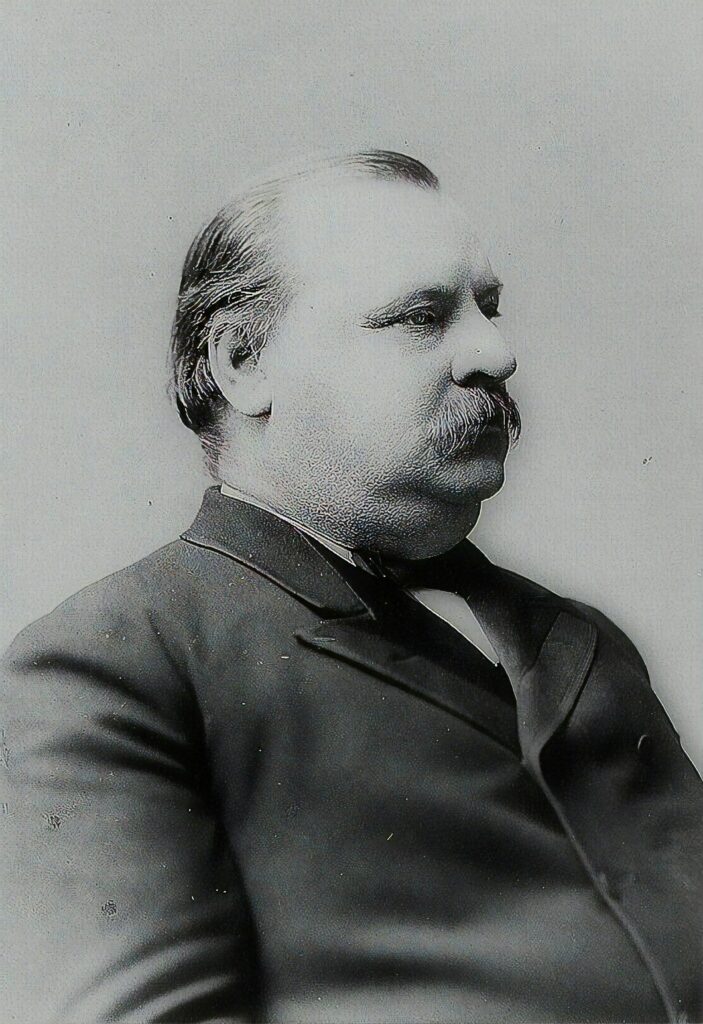Thursday Miscellany

From Washington, DC,
- The Wall Street Journal reports,
- “Susie Wiles, who led Donald Trump’s presidential run, will become his White House chief of staff when he retakes the presidency next year, the campaign said Thursday, making her the first woman to hold that role in U.S. history. * * *”
- “Those who have worked with her say she is unflappable behind her trademark mirrored sunglasses, avoids the limelight and is quick to give her team credit for her stack of victories.
- “Every campaign she’s been involved with, she’s been a calming presence,” longtime Florida lobbyist and Wiles ally Brian Ballard told the Journal. “He saw in her the DNA of a winner.”
- Federal News Network interviews principal Thiago Glieger, a principal of RMG Advisors about getting organized for the Federal Employee Benefits Open Season, which starts next Monday.
- The Wall Street Journal reports,
- “U.S. health officials proposed banning an ingredient used in popular oral decongestants, a step toward removing dozens of cold medicines from store shelves.
- “The Food and Drug Administration on Thursday proposed removing the ingredient, known as oral phenylephrine, from its list of approved over-the-counter ingredients after determining the drug doesn’t work at relieving stuffy noses.
- “The agency took action after The Wall Street Journal had reported that some recent studies found oral phenylephrine in certain medicines was ineffective at relieving nasal congestion. CVS Health had already said it would pull some decongestants containing phenylephrine and no longer sell them.
- “After taking public comment, the FDA could issue a final decision that would end sales of medicines containing the ingredient, including certain versions of Benadryl, Mucinex and Tylenol. The agency said it would give drugmakers time to remove the products from the market or reformulate them.
- “The earliest a potential ban would take effect is 2026.
- “Instead of taking pills that contain phenylephrine to clear congestion, people can take pills made from pseudoephedrine, antihistamines or nasal sprays, including those with phenylephrine. Physicians and pharmacists say the alternatives are effective.”
- Beckers Hospital Review adds,
- “The FDA has updated the labels for all GLP-1 receptor agonists, including popular medications Ozempic, Wegovy, Saxenda and Mounjaro, to include a new warning about the risk of pulmonary aspiration during general anesthesia or deep sedation, Medscape reported Nov. 6.
- “The updated warning, issued Nov. 5, stems from rare postmarketing reports of patients who experienced pulmonary aspiration, when food or liquid enters the lungs, while undergoing elective surgeries or procedures requiring anesthesia despite following fasting guidelines prior to surgery.”
- Per an HHS press release,
- “Today, the U.S. Department of Health and Human Services (HHS) released the 2021–2023 Progress Report – PDF for the Sexually Transmitted Infections National Strategic Plan for the United States: 2021–2025. The progress report provides a high-level overview of progress on select federal agency programs, policies, research, and other activities during fiscal years 2021–2023.”
- “The progress report features an at-a-glance table of the status of seven core indicators and seven disparities indicators, which were identified in the national plan as a quantitative approach to measuring progress on STI prevention and care in the United States. The most recently available data reveal that seven of the indicators have met or are moving toward annual targets and that seven have not met or are moving away from annual targets. Of this latter group, six indicators relate to syphilis, which is the focus of the National Syphilis and Congenital Syphilis Syndemic Federal Task Force led by HHS Assistant Secretary for Health, Admiral Rachel Levine, M.D.”
From the public health and medical research front,
- Health Day tells us,
- “Nearly 16% of American adults — that’s close to 1 in 6 — now has diabetes, according to the latest data from the U.S. Centers for Disease Control and Prevention.
- “Increasing age and widening waistlines greatly increase the odds for the disease, which happens when the body doesn’t use insulin properly, resulting in high blood sugar levels. If left unchecked, diabetes can be disabling and even life-threatening.
- “The vast majority (95%) of diabetes cases are type 2 diabetes, which occurs when the body’s cells no longer respond to insulin as they should. Insulin regulates levels of sugar in the blood. Type 2 diabetes is strongly connected to excessive weight.
- “The new data, collected from mid-2021 through mid-2023, found a big rise in diabetes rates since 1999-2000, when 9.7% of adult Americans had the disease.
- ‘There was a significant gender gap in diabetes rates in 2023: Nearly 1 in 5 men (18%) have the illness, compared to 13.7% of women, according to researchers at the CDC’s National Center for Health Statistics (NCHS).”
- and
- “A simple nasal swab might help doctors predict the severity of a person’s COVID infection, a new study suggests.
- “More than 70% of people with mild or moderate COVID develop certain antibodies in their nasal cavities that are linked to fewer symptoms, better immune response and faster recovery, researchers reported Nov. 6 in the journal Science Translational Medicine. * * *
- “Researchers are working on a nasal swab test that could be used to predict how bad a person’s COVID infection will prove to be.
- “Right now, we’re either looking at infection risk before it happens or analyzing the infection course well after recovery,” said researcher Ben Babcock, a doctoral candidate at Emory. “Imagine if we could capture the immune response in real time, right in the clinic. A just-in-time test could give physicians and patients the real-time information they need to make faster, smarter treatment decisions.”
- STAT News informs us,
- “For months, as human cases of H5N1 bird flu associated with an outbreak of the virus in U.S. dairy cattle have mounted, one question has loomed larger than others: how many human infections are getting missed?
- “Farmworkers face some of the most intense exposure to the bird flu virus, but resistance from farmers and a lack of health insurance and paid sick leave in the industry have limited the amount of testing of workers and hampered public health officials’ ability to track where the virus might be spreading. Now, long-awaited results from blood testing conducted by the Centers for Disease Control and Prevention are starting to fill in the picture.
- “The findings, published Thursday, suggest that a small but not insignificant number of H5N1 infections are going undetected among people who work with dairy cows. Blood samples taken from 115 farm workers in Michigan and Colorado over the summer found evidence of a recent infection in eight individuals — half of whom recalled being ill around the same time the cows were sick. The other half could not recall having any symptoms.
- “Known as serological surveys, the studies involve fishing out antibodies in the blood — molecules made by the immune system in response to a pathogen’s attack that persist long after an infection is over. Finding them is a signal of past contact with a particular virus and helps scientists understand how widely it has spread.
- “While the new results suggest that current public health efforts are missing cases, they do not indicate that the strain of H5N1 associated with the dairy cattle outbreak has gained the ability to spread from person to person.”
- NBC News reports,
- “Brie and camembert that may potentially be contaminated with listeria are being recalled, the latest in a series of food incidents in the U.S. in recent months.
- “Savencia Cheese USA is recalling select soft ripened cheeses after routine testing found the processing equipment at the company’s Lena, Illinois, manufacturing facility may have been contaminated with the bacteria.
- “Aldi and Market Basket, a supermarket chain in New England, are among stores that sell the cheeses, but the recalled products only had “limited regional distribution” in the U.S., according to the U.S. Food and Drug Administration.
- “The “few retailers” that received them have been informed of the possible contamination and are removing products from shelves, the FDA added.
- “There are no confirmed reports of anyone getting sick so far, the agency noted.”
- NIH Director Dr. Monica Bertagnolli writes in her blog,
- “Digestion involves much more than just your stomach. The digestive process that fuels your body begins in your mouth each time you take a bite of food and chew. An enzyme in your saliva, called amylase, then starts to break down complex carbohydrates—or starches found in many fruits, vegetables, and grains—into simpler sugars to give you their sweet flavor followed by a burst of energy.
- “Amylase is the reason we’re so good at turning starch into calories, but it isn’t the same for everyone. There’s plenty of genetic variation in the number of salivary amylase genes (AMY1) our cells carry and, therefore, in how much of this essential starch-busting enzyme people have. Studies have suggested a link between changes in amylase gene copy numbers over time and both the rise of agriculture and starch-heavy diets. Now a study in Science , supported in part by NIH, suggests that extra copies of AMY1 are not only connected to our ability to effectively digest carbs, but also may be more ancient than previously known, arising even before modern humans split from Neanderthals and long before the advent of farming.” * * *
- ‘The researchers compared the modern-day amylase genes to publicly available DNA sequences from 68 ancient human samples obtained from preserved remains. This revealed that ancient hunter-gatherers already had six to eight AMY1 copies long before people started growing crops and eating high amounts of starch. In fact, genetic variation underlying the production of this enzyme had already spread across Eurasia as far back as 45,000 years ago. However, the new analyses do show an increase in amylase gene copy numbers in the last 4,000 years, as people took up farming.
- “The study team went on to uncover evidence that the expansion of amylase genes apparently has a longer history than anyone had suspected. Intriguingly, they found three copies of AMY1 in the DNA of three of six Neanderthals and one Denisovan. Neanderthals and Denisovans are both extinct relatives of early humans. The findings suggest that an extra copy of the amylase gene may have arisen as long as 800,000 years ago. The researchers also described how those first extra AMY1 copies could lead to their continued duplications or deletions to produce the wide variation in amylase gene copy numbers seen among modern humans.
- “This variation in amylase genes would have afforded our ancestors dietary flexibility, allowing them to adapt as diets changed over time. But these discoveries aren’t only fascinating from an evolutionary or historical point of view. They may also lead to new understandings of genetic differences among people today, with potentially important implications for our metabolisms, nutrition, and health.”
- The Washington Post reports,
- “Regular practice of yoga can reduce lower-back pain, improve sleep and lessen reliance on pain medication, according to a study conducted by Cleveland Clinic researchers.
- “The randomized clinical trial studied 140 Cleveland Clinic employees who had disclosed moderate amounts of pain for at least three months. Participants who engaged in a 12-week virtual yoga program reported feeling less pain and better sleep when compared with those who did not have access to the program.”
From the U.S. healthcare business front,
- Modern Healthcare lets us know,
- “Private equity firms are shifting their focus from providers to healthcare information technology and pharmaceutical services.
- “State and federal regulatory scrutiny has deterred private equity investment in healthcare providers, PitchBook analysts said in the company’s latest healthcare services report. But regulatory oversight of healthcare-related private equity deals has slightly cooled as certain state bills stalled in the 2024 legislative session, and the report says analysts expect more private equity activity through the rest of the year.”
- The American Hospital Association News relates,
- “Baxter expects to restart a second IV solutions manufacturing line within the next week, the company announced Nov. 7. Along with the first line that resumed production last week, the two lines comprise approximately 50% of the North Cove, N.C., site’s total pre-Hurricane Helene production of IV solutions and about 85% of one-liter solutions production. Hospitals in clinics most commonly use the one-liter solutions. The earliest the facility could begin shipments is late this month.
- “The company said they expect their peritoneal dialysis and irrigation solutions lines to be the next to resume production and would begin by early December. Baxter expects all lines to restart by the end of the year but does not have a timeline on when total production will return to pre-hurricane levels. The company also said today that it has evaluated and approved more than 200 allocation exception requests to support the neonatal and pediatric patient needs.
- “In addition, Baxter announced that a second temporary bridge has been installed at the plant and is in use. The bridge will allow traffic for additional trucks and equipment. The first bridge so far has allowed transport of more than 1,000 truckloads of products, Baxter said. Prior to the hurricane, the plant had manufactured approximately 60% — or 1.5 million bags or 95 truckloads — of IV solution used every day in the U.S.”
- Beckers Payer Issues ranks the largest payers by 3rd quarter profits.
- Per Fierce Healthcare,
- “CerpassRx, an independent pharmacy benefit manager, is teaming up with Waltz Health to launch a new AI-powered tool that aims to better manage specialty drug spending.
- “Called Intelligent Specialty Engine, the tool leans on Waltz’s capabilities to offer clients real-time data analytics and management options that are designed to drive down spending, create greater transparency and improve the experience for both the patient and the plan sponsor.
- “The PBM said that the platform is a “unique deployment” of Waltz Health’s Waltz Connect platform, which connects users to a network of both national and regional pharmacies that compete on price. It uses AI to help steer patients to “the most cost-effective and clinically appropriate pharmacies.”
- Per BioPharma Dive,
- “Sarepta Therapeutics is giving up on an experimental drug for Duchenne muscular dystrophy as sales rocket for its approved gene therapy for the disease.
- “The decision to discontinue SRP-5051 was based on several factors, company executives told analysts on a conference call Wednesday. Safety concerns, feedback from the Food and Drug Administration and the “evolving landscape of Duchenne” with the approval of Sarepta’s gene therapy Elevidys all played a role, Chief Scientific Officer Louise Rodino-Klapac told analysts and investors.
- “Elevidys revenue climbed to $181 million in the third quarter from $122 million in the second quarter, beating analyst estimates of about $160 million. Sarepta also pulled in $9.5 million in royalties from Roche, which sells the gene therapy outside the U.S.“
- Per Fierce Pharma,
- “Despite a mission to become a dominant cancer drug player, Gilead Sciences has as of late been locked in on its bread-and-butter antiviral franchise with an eye on the potential of its long-acting HIV med lenacapavir.
- “But with its cell therapy unit stalling and antibody-drug conjugate Trodelvy facing challenges, the company’s oncology ambitions were brought back under the spotlight during its third-quarter earnings report.
- “Gilead’s once fast-growing cell therapy products have hit a wall as of late with relatively flat sales all year. Over the third quarter, lymphoma treatment Yescarta saw revenue dip 1% to $387 million compared to last year’s third quarter, while its Tecartus counterpart similarly remained flat with 2% growth to $98 million.
- “Gilead attributed the Yescarta challenges to “increased in- and out-of-class competition” in the U.S., slightly offset by increased demand in relapsed or refractory large B-cell lymphoma (LBCL) in other regions. In terms of the outside competition, one notable rival includes Bristol Myers Squibb’s rival CD19 CAR-T Breyanzi.”
- Per MedTech Dive,
- “Johnson & Johnson received Food and Drug Administration approvalfor its Varipulse pulsed field ablation (PFA) system, joining Boston Scientific and Medtronic in the U.S. market for the fast-growing atrial fibrillation (AFib) treatment.
- “Varipulse is approved to treat patients with drug-resistant, recurrent paroxysmal AFib, a common form of abnormal rhythm in the heart’s upper chambers, the company said Thursday. The platform is integrated with J&J’s Carto 3 mapping system in a single device that enables electrophysiologists to view inside the heart to position the catheter.
- “We are confident that this eagerly awaited platform will be a valuable tool for physicians in performing safe, effective and efficient AFib procedures with an intuitive and reproducible workflow,” Jasmina Brooks, president of electrophysiology at J&J Medtech, said in a statement.”








